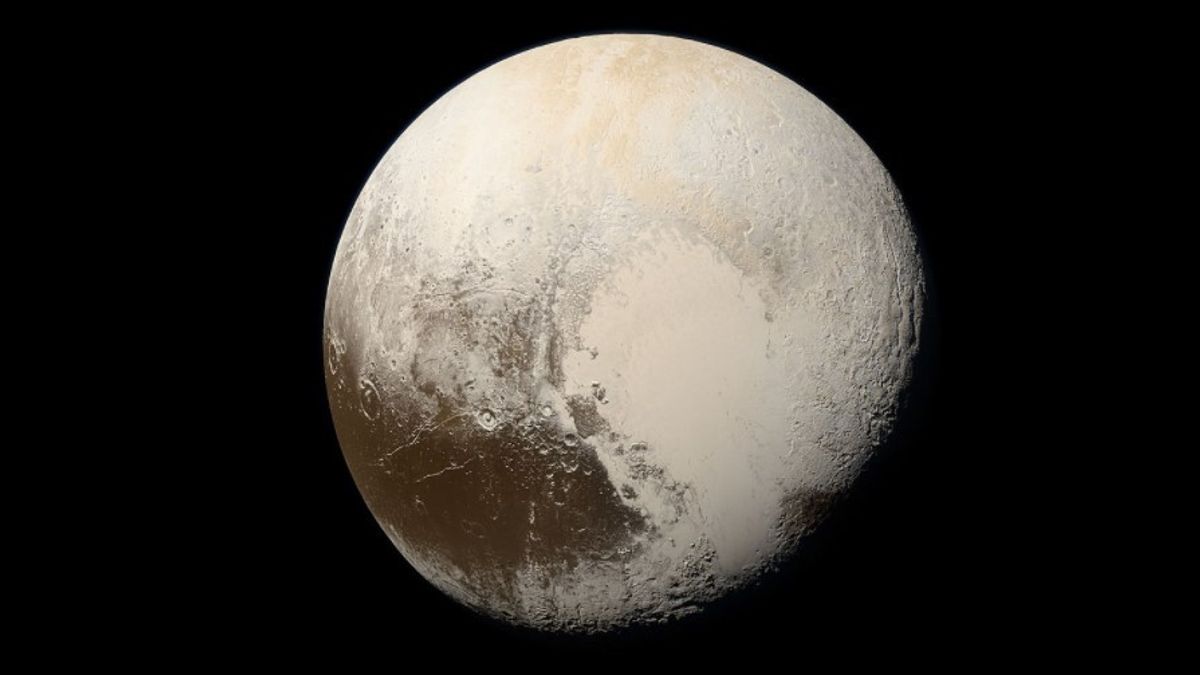JAKARTA - On August 24, 2006, the International Astronomical Union (IAU) downgraded Pluto to a 'dwarf planet.' With Pluto's status downgraded, there are only eight planets in the solar system instead of the nine we normally study.
Citing the Library of Congress, there are three criteria for an object to be called a full planet. First, the object is in orbit around the sun. Second, it has sufficient mass for hydrostatic equilibrium or can maintain a spherical shape. Third, have a clear orbital path.
Pluto only meets two of these criteria and does not have the third. For billions of years, Pluto has not managed to have a clean environment. So any large object in space that doesn't meet these criteria is now classified as a dwarf planet, including Pluto.
An astronomer from the United States, Clyde Tombaugh, discovered Pluto on February 18, 1930. He found it after comparing photos taken from the same part of the sky over several nights in January. Tombaugh identified a moving object against a background of stationary stars.
The search for planets began with the rich Bostonian, Percival Lowell, who founded the Lowell Observatory in Flagstaff, Arizona. He embarked on an extensive project to search for a ninth planet, which he called "Planet X". In 1909, Lowell and an astronomer named William Pickering, stated several possible celestial coordinates for such a planet.

Lowell and his observatory searched until he died in 1916, but to no avail. Unbeknownst to Lowell, on March 19, 1915, his observatory had captured two faintly visible photos of Planet X - later to be named Pluto. Lowell wasn't the first person to unknowingly photograph Pluto. There are sixteen known pre-discoveries and the oldest was discovered by the Yerkes Observatory on August 20, 1909.
The search for Planet X was not resumed until 1929. The project was then handed over to Clyde Tombaugh, a 23-year-old astronomer who had just arrived at Lowell Observatory. Tombaugh's task was to systematically image the night sky in pairs of photographs taken two weeks apart, then examine each pair and determine if any object had shifted its position.
Using a machine, Tombaugh quickly slides back and forth between the views of each plate to create the illusion of movement of any object that changes its position or appearance. On February 18, 1930, after nearly a year of searching, Tombaugh discovered a possible moving object on a photographic plate taken on January 23 and January 29, 1930. After the observatory obtained further confirmation photographs, news of the discovery was sent by telegram to the Harvard College Observatory on March 13, 1930.
Shake the world
This discovery made headlines around the world. The Lowell Observatory has the rights to name Planet X, receiving more than 1,000 suggestions from around the world. The name Pluto was proposed by Venetia Burney, an eleven-year-old student in Oxford, England. Venetia was interested in classical mythology as well as astronomy and found the name of a god fitting for such a dark and cold world.
Burney then conveyed this to Falconer Madan, a former librarian at the University of Oxford's Bodleian Library. Madan gave the name to Professor Herbert Hall Turner, who then sent it to his colleagues in the United States. The object was officially named Pluto on March 24, 1930. The name was announced on May 1, 1930, and Venetia Burney received five pounds as a gift.

On the other hand, astronomers have had a hard time accepting Pluto as a full-fledged planet since its discovery. Pluto's size has always been an issue, being smaller than the moon. Its orbit around the sun does not match the path followed by the other eight planets. Astronomers are also starting to find objects of similar size around Pluto.
On July 14, 2015, NASA's New Horizons spacecraft made its historic flight through the Pluto system. The mission provided the first full image of Pluto and its moons. the flight crew gathered other data that has changed our understanding of this mysterious dwarf planet.
The robot from New Horizon flew past Pluto and took lots of photos to give a good view of the dwarf planet's colors. It turns out that Pluto is mostly reddish-brown in color. The redness may be due to the hydrocarbon molecules. The color is formed when cosmic rays and sunlight interact with methane in Pluto's atmosphere.
*Read other information about TODAY's HISTORY or read other interesting articles from Putri Ainur Islam.
TODAY'S HISTORY More
SEE ALSO:
The English, Chinese, Japanese, Arabic, and French versions are automatically generated by the AI. So there may still be inaccuracies in translating, please always see Indonesian as our main language. (system supported by DigitalSiber.id)














